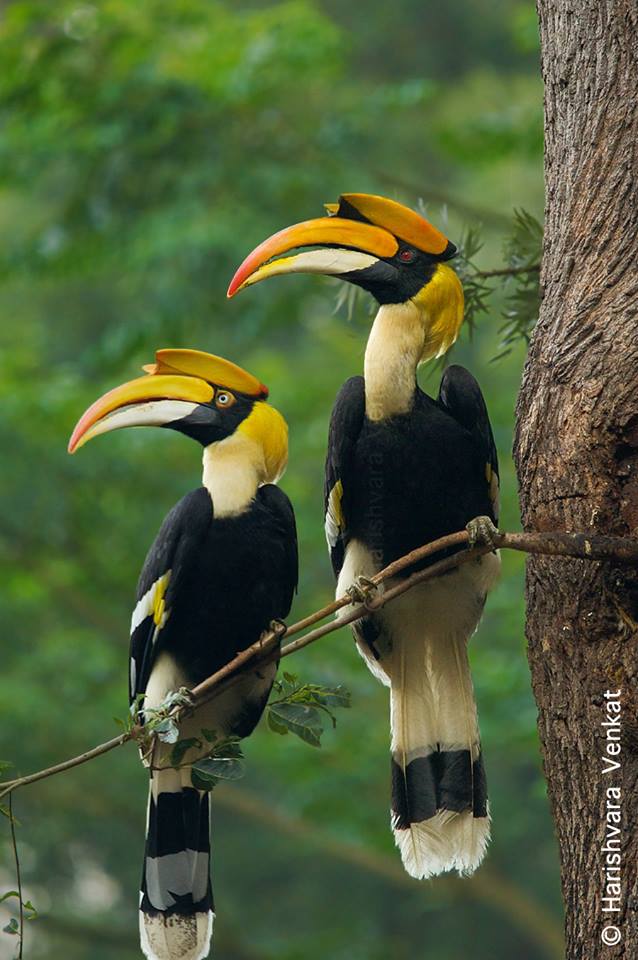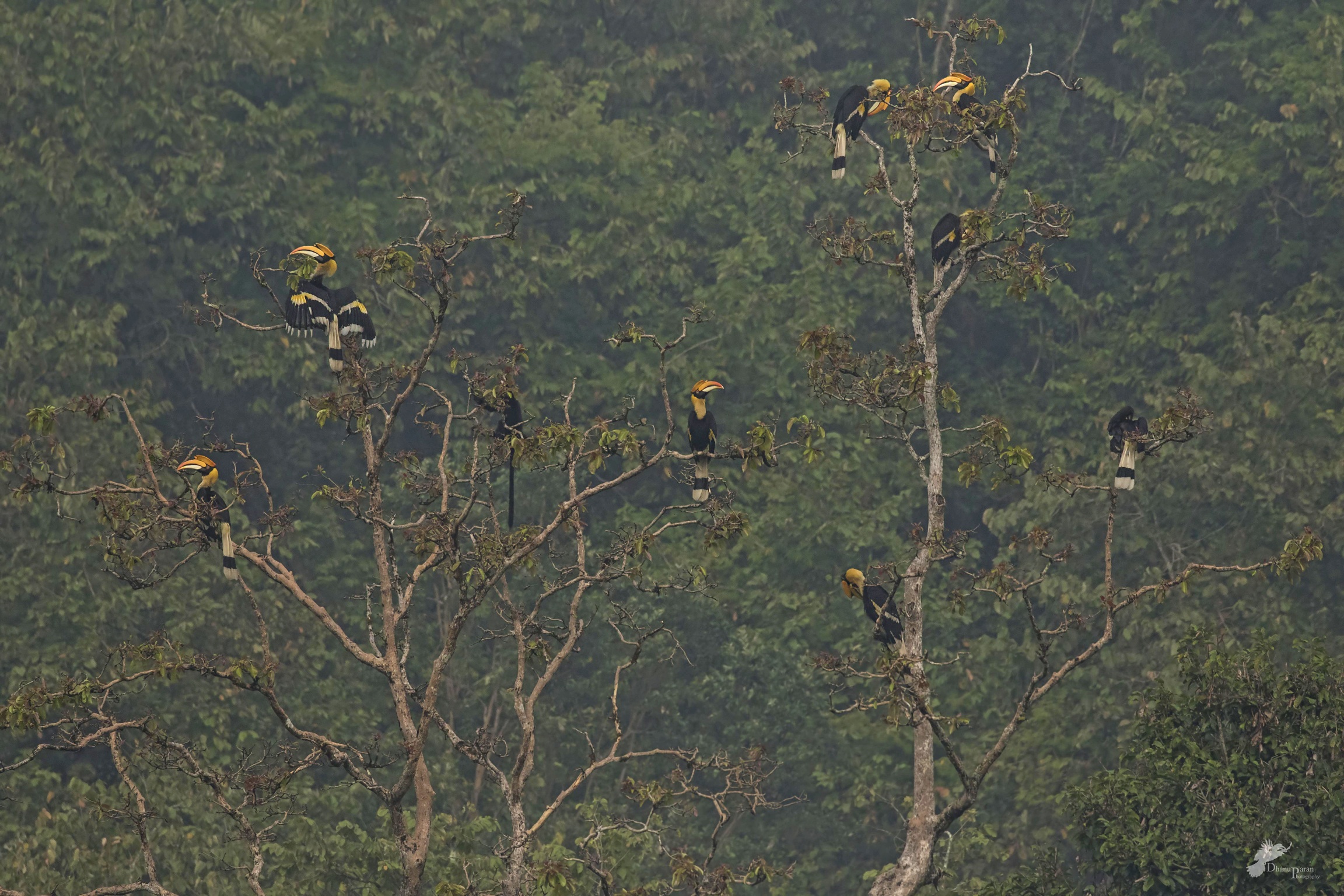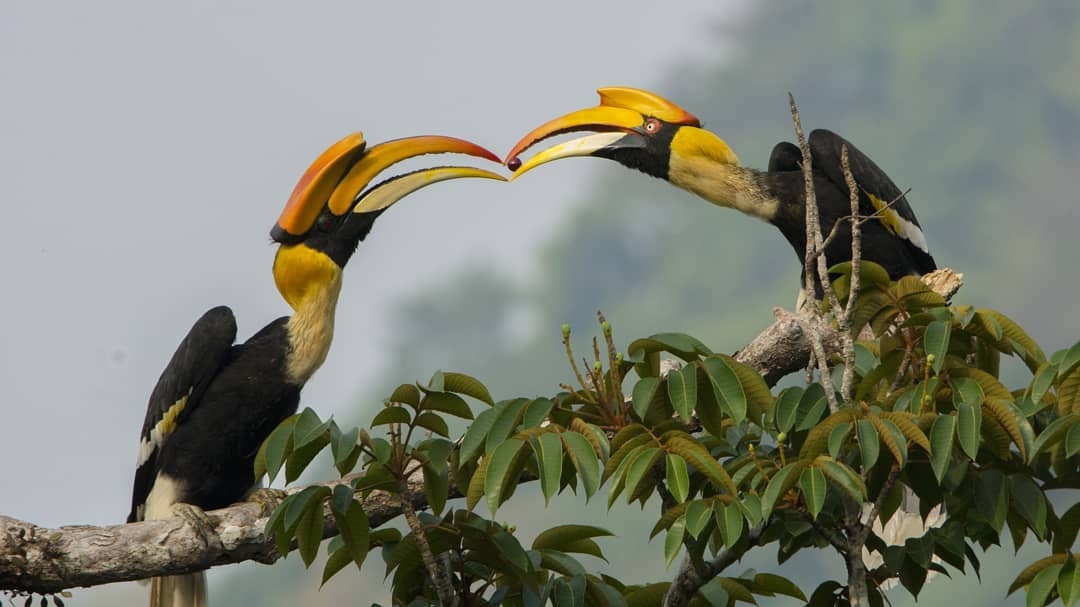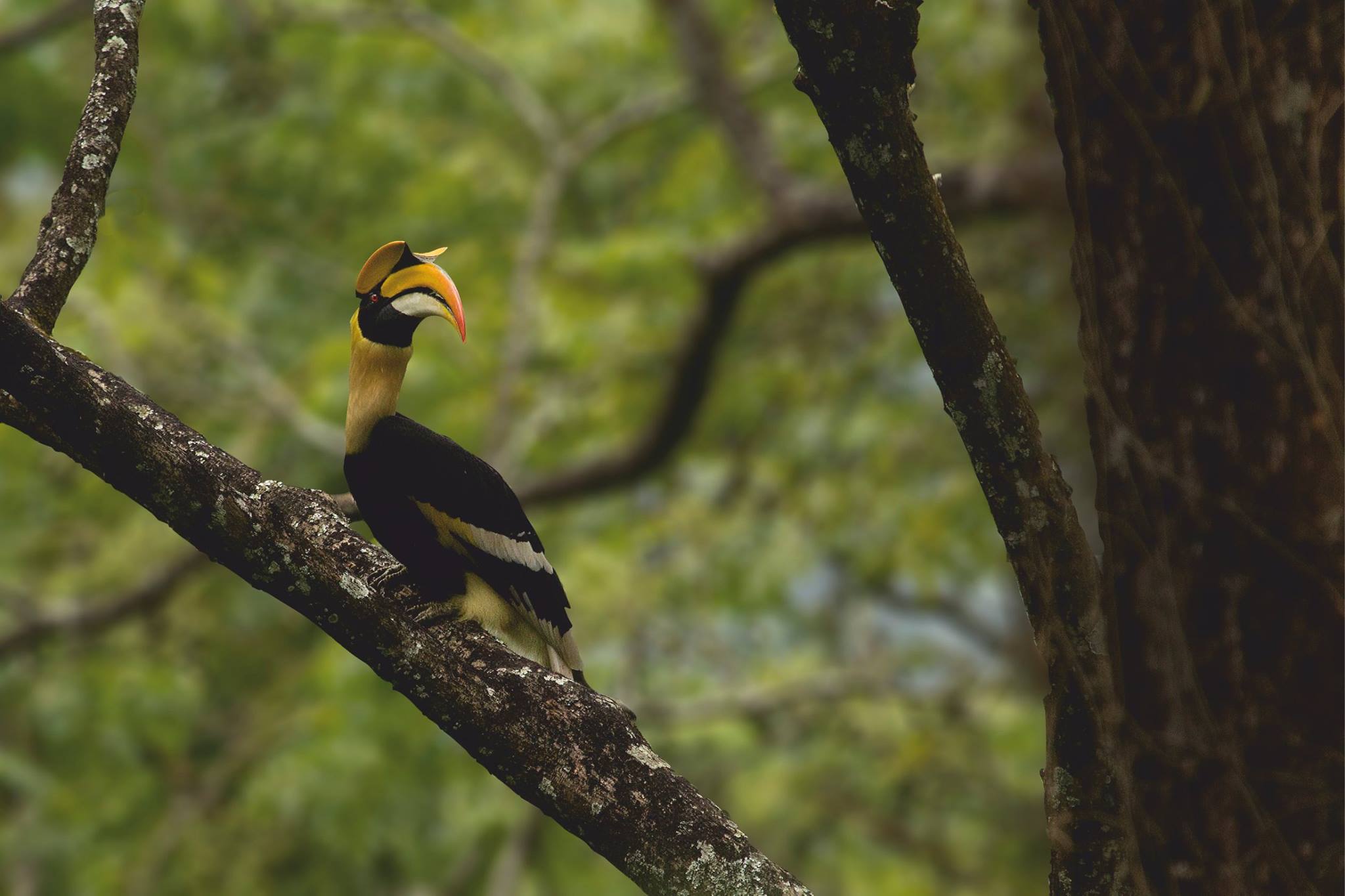Located in the Anamalai Range of the Western Ghats, Valparai is one of the most pristine spots in Tamil Nadu. The huge trees that reach out to the sky with creepers clambering over them accompanied by the ferns and wild flowers form a wall of greenery on the mountains. As the rain mellowed down to a drizzle, I stepped out to experience rain. The occasional chirping of the birds and butterflies nectaring on tiny wildflowers strewn amongst the moist forest floor made the walk a pleasant one. Suddenly I heard a loud cackling sound and my attention gripped on to a pair of Hornbills on a fig tree.
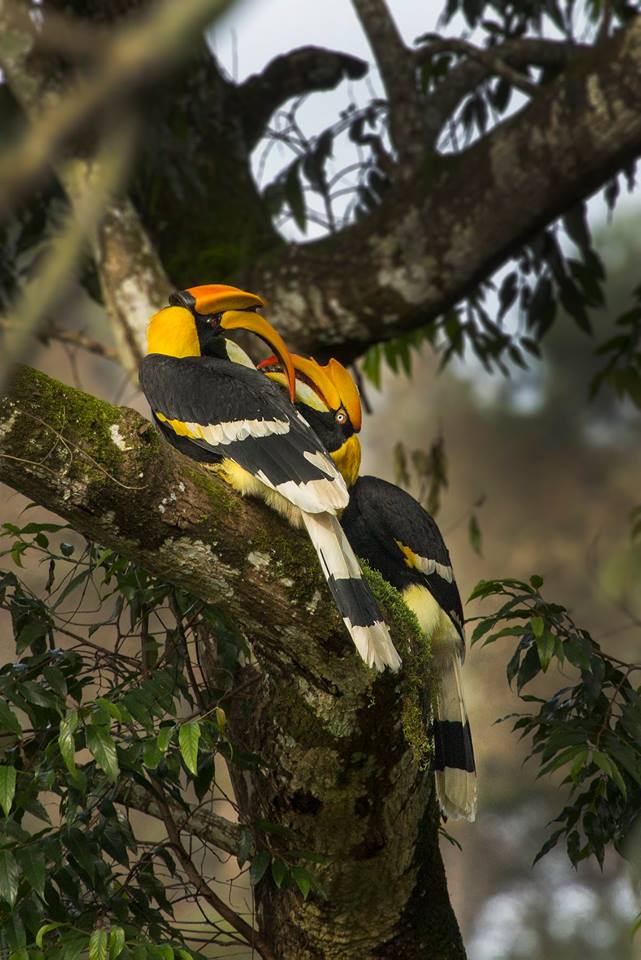
The male hornbill and the female hornbill were conversing with each other probably discussing which direction to fly or where to have lunch. After a short discussion both flew away in the same direction.
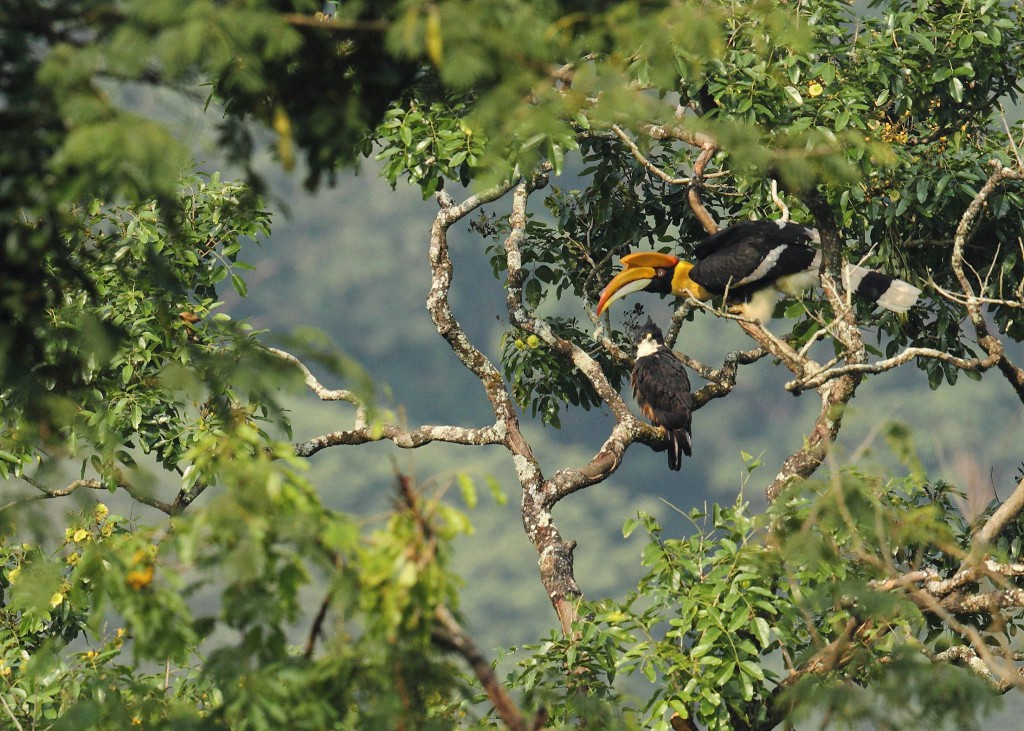
Hornbills are one of Asia’s most attractive birds. Large, colorful and easier to spot than most other birds, hornbills have become one of the most iconic birds in the tropical forests of Asia. Hornbills primarily feed on fruit, figs and insects. They collect fruit in their neck pouch and have the ability to clasp fruit, insects and other food with the tip of their bill and deftly toss it in the air and catch it like a person catching a piece of popcorn with their mouth.
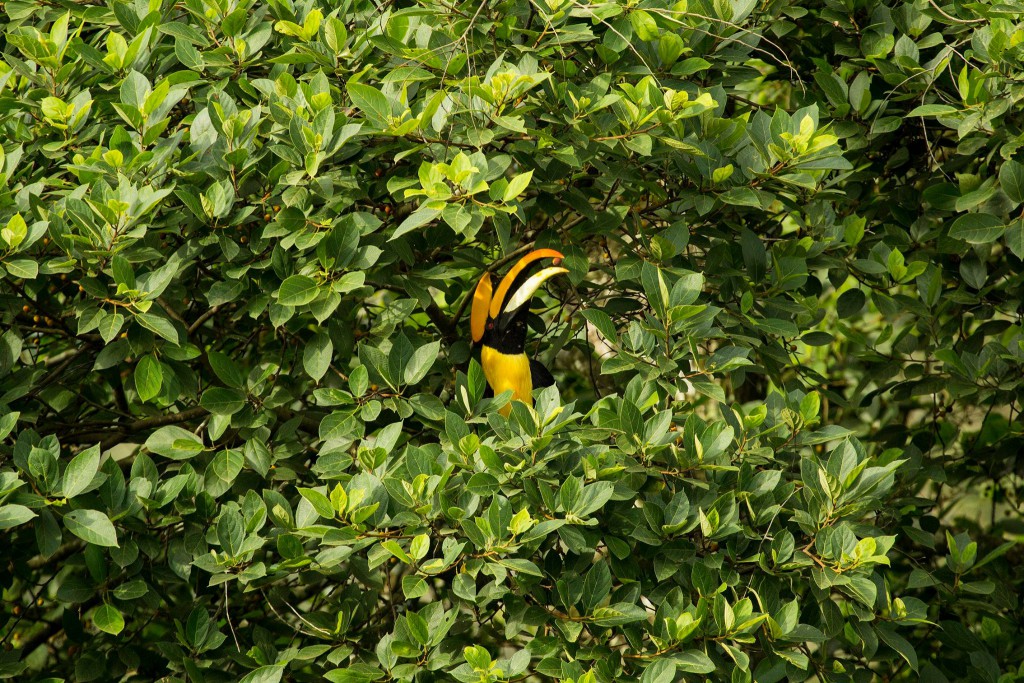
These birds are really huge and when they flap their wings to fly they make a characteristic sound. The loud whooshing noise emanating from hornbills as they fly is produced by the air being compressed in the gaps of the hornbill’s wing feathers.
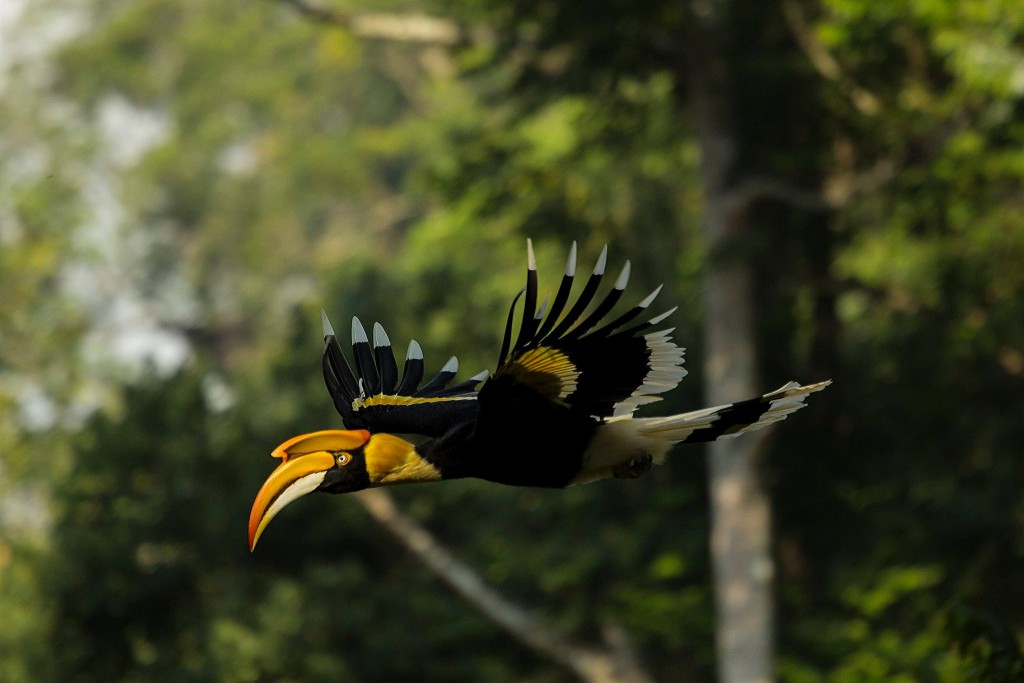
Large hornbills lack feathers that allow for smooth air flow. The wing beats of hornbills can be heard from half a mile away.As the clouds and the mist constantly compete with each other to change the mood of the landscape, amongst the fern laden trees, I found another hornbill trying to put its beak inside a hole on a tree. I was lucky as this was its nest and the male hornbill was trying to feed the female.
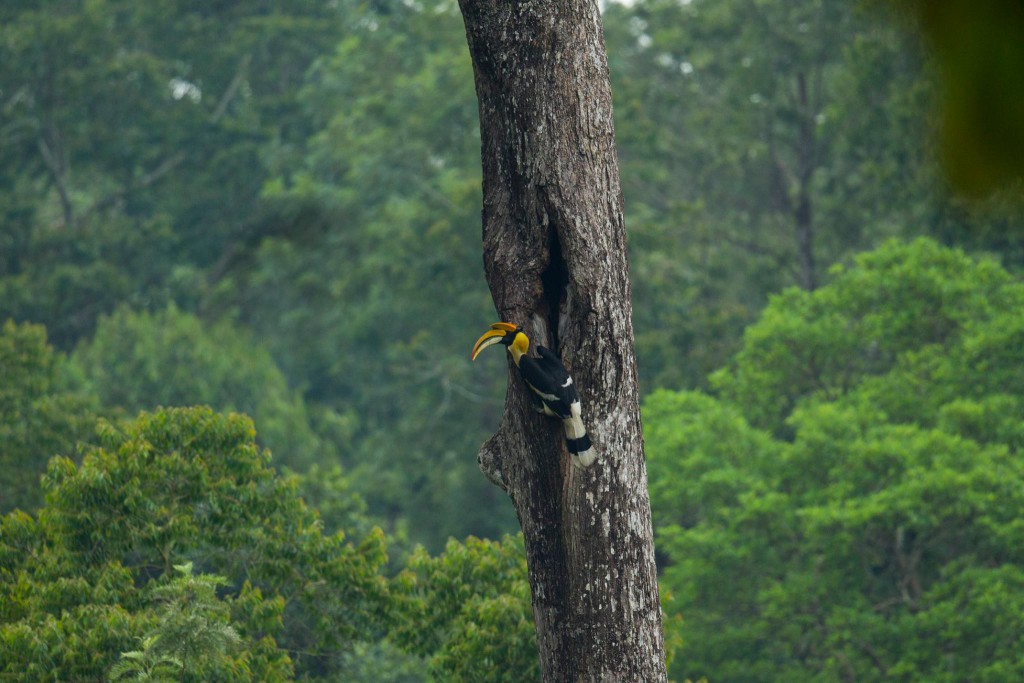
Hornbills nest in naturally formed tree cavities. The female hornbill is sealed inside the nest that is shut except for a narrow, vertical slit about half an inch wide. The slit is wide enough to pass food through but narrow enough to seal out potential predators such as Martens and other animals that feed on eggs and young birds. Their long curved bills that are mostly yellow can reach lengths of 13 inches. The bill is an integral part of the hornbill’s skull and is used by the bird to feed, fight, preen, make nests and potentially serve as an important means of protection.
In this picture – Harishvara Venkat has edited an image to bring the male and the female bird to one image with the intention of showing the basic difference in the sexes.
Left: Female, Right: Male. Females are smaller than males and have bluish-white instead of red eyes although the orbital skin is pinkish. The most prominent feature of the hornbill is the bright yellow and black casque on top of the massive bill. The back of the casque is reddish in females while the underside of the front and back of the casque is black in males. The males have black marking on white tail and the females have white on black.
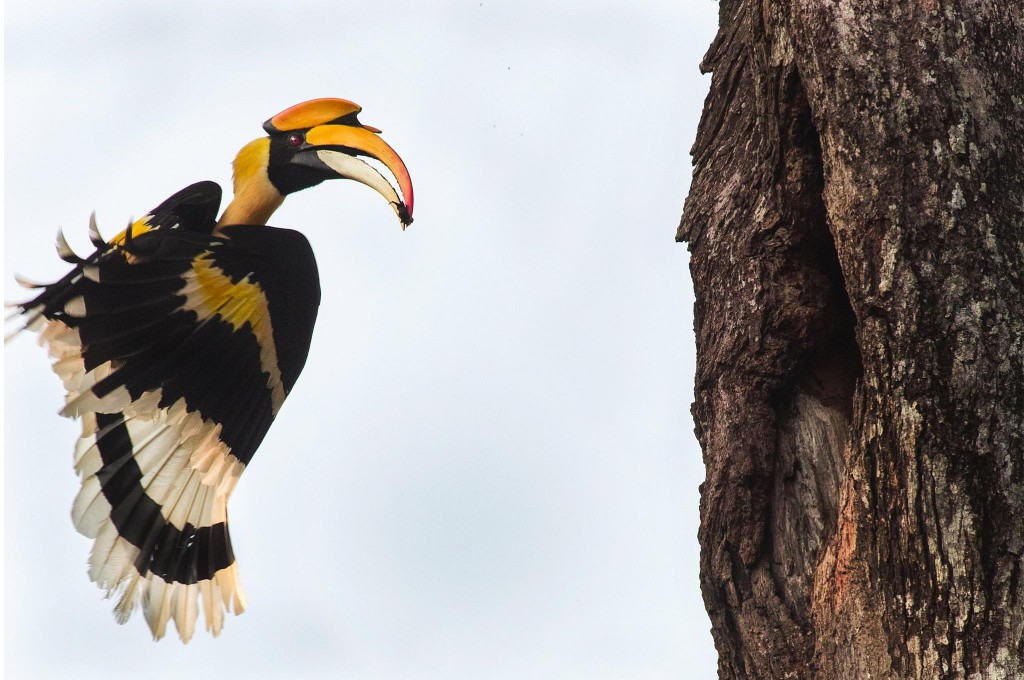
Hornbills are generally monogamous. Many mate for life. As I watch the hornbill, it makes several trips to its nest with food. Males bring up to 13 meals of fruit a day to nesting females. One male was observed delivering 150 figs in one visit, regurgitated one after another. The females reportedly like some variety to their diet and have refused food if they are brought too much of the same thing. The Great Indian hornbill feed on fruit, primarily figs, plucked from among the foliage. Figs are important to rain forests as they are available when there is little else to eat. This is because fig trees – even those belonging to the same species – follow individual schedules and rarely fruit at the same time. Unlike mangoes and other tropical fruits, a diverse community of fig trees provides food year-round.
“Hornbills are important seed dispersal agents to many tropical forest trees thus keeping the forests healthy and diverse and hence popularly referred to as ‘farmers of rainforests’.”
HABITAT : Tropical Rainforest
STATUS : Near Threatened
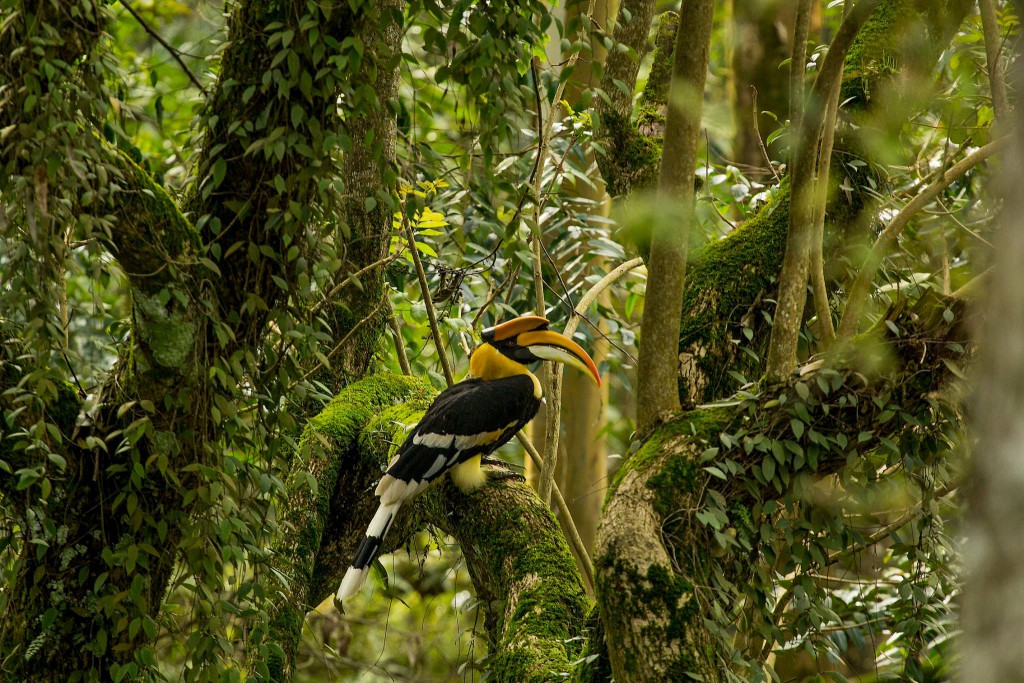
Threats :
The biggest threats to these farmers of the rainforests are shrinking habitats and pressure from poaching. Habitat destruction and removal of large trees limit the food and nesting space availability. They are targeted for their meat, beautiful feathers and casque by several tribal folks as a symbol of hunting prowess.
How can you help?
Hornbill Watch is a citizen science initiative that allows you to participate and contribute towards the conservation of hornbills by sharing hornbill sightings and images which will help conservationists prioritize important sites for conservation (Source – Hornbill Watch)
Visit www.hornbills.in to report your sighting.
About the series – Icons of Anamalais:
A treasure house of bio-diversity, the Anamalai’s region of the Western Ghats is home to a spectacular array of wild species, some rare and endemic, that are found nowhere else on Earth. “Elephants Hills” as it is literally translated, the region is one of the most picturesque landscapes in the country that hosts a broad variety of ecosystems ranging from tropical wet evergreen forests to sholas and montane grasslands to dry, scrub jungles.
Home to the large mammals like the Asiatic Wild Elephants, Indian Gaur, the endangered species like the Wild Dogs, Nilgiri Tahr and Lion Tailed macaques, Anamalai’s is also first to be home to all 16 endemic bird species of Western Ghats.
This series of articles by The Pollachi Papyrus, celebrates the iconic birds and mammals of the Anamalai’s –a unique ecological tract and a global bio-diversity hotspot that needs protection and conservation.


